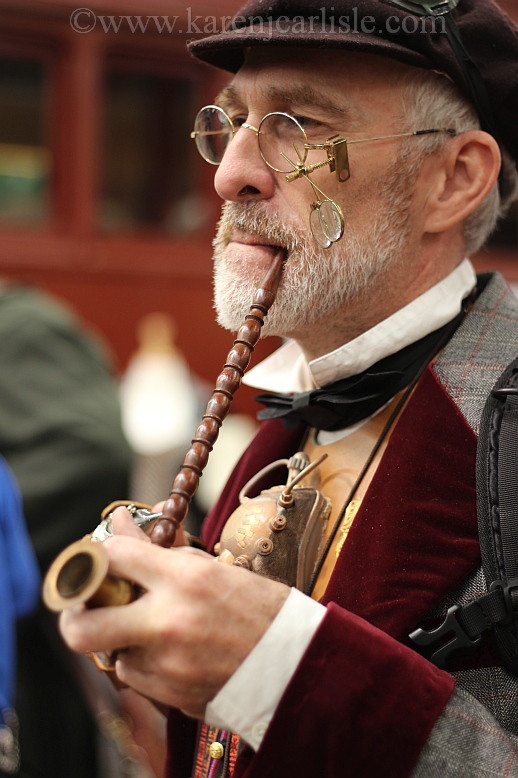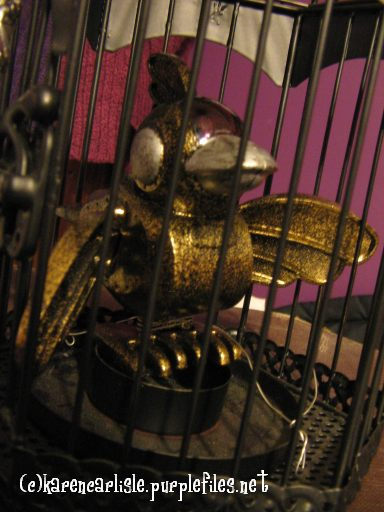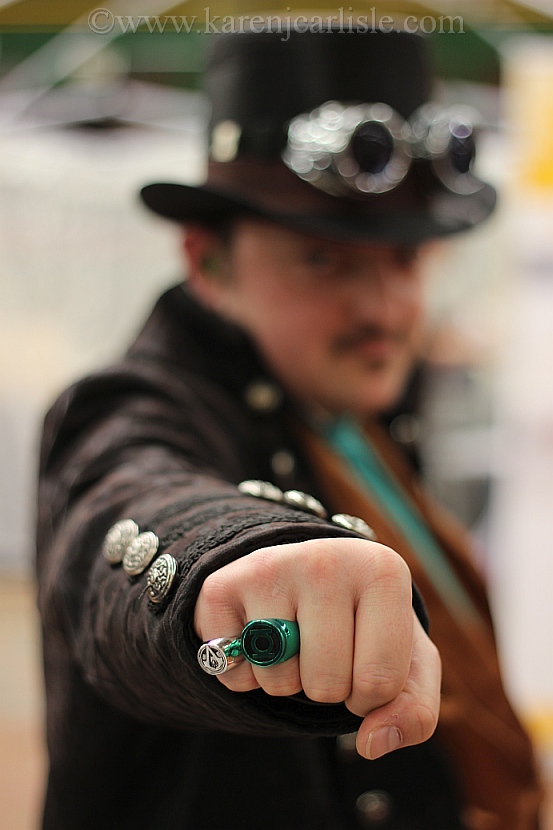Last month, for Steampunk Hands Around the World, I posted about how steampunk had enriched my life. I spoke of the diversity and inclusivity of steampunk, how it fired my imagination and inspired me to search for the wonder in the world and how its whimsical nature has helped with my anxiety. Recently I spoke to someone who asked me what exactly is steampunk? I thought I’d revisit a post which explains about:
The Steam, the Punk and the Writing.
The first appearance of the word steampunk was in Locus Magazine in 1987. The term was coined by SF author K W Jeter to define specific speculative fiction works and is a tongue-in-cheek variant on cyberpunk.
What is Steampunk?
The simplest definition of steampunk is to describe it as Victorian science fiction. To elaborate: Victorian: set in the 19th century, with the science fiction element containing modern technology powered by steam.
In reality steampunk is more complex. It is a creative movement re-imagining analog technologies, mechanics and inventions – powered by steam – and set in the industrialised 19th century. It now encompasses not only fiction, but art, fashion, music, cinema/TV and fandom.
The Steam – The essence of steampunk can be described as an imagined alternate history or future where electricity and petroleum technologies did not dominate, and where steam/ geared, analog technology gave rise to its own versions of modern technology.
The Punk – a philosophy of bucking the system, going against the convention to declare an individuality in style, attitude and gadgets. In a way steampunk is a rebel with a cause – to be free of the norm.
One of my favourite definitions comes from the TV show Castle (Episode: Punked)
“…a subculture that embraces the simplicity and romance of the past but at the same time couples it with the hope and promise and sheer super coolness of futuristic design.”
As a writing genre, it is a sub genre of science fiction and fantasy; steampunk is now listed as a separate sub-genre on Amazon and Goodreads. It can contain fantasy, horror or historical aspects. It is usually written as alternative history or alternative fantasy.
Steampunk stories are often set in 19th century Western civilizations, such as Victorian England (or the Wild West) where there was a rapid urbanisation and expansion of Empires, a plethora of inventions and scientific discoveries, telecommunication and the rise of mechanised manufacturing and industry. Recently more stories have been set in Asia or Africa. Steampunk has also crossed over into other genres such as YA, Romance, Erotica and with Gothic/paranormal crossovers such as Gaslamp.
There is sometimes a fine line between Victorian (historical) era and steampunk novels. There is no rule to how many steampunk elements need to be incorporated into a story; it can be subtle or over reaching, creating a very blurred line in some cases.
Steampunk has increased in popularity over the past decade. There are books on writing the genre and even an article on How to Write Steampunk in Writing Magazine. It has infiltrated into mainstream media and fashion. Steampunk inspired fashion featured in the Fall 2012 line from Prada, Retro G Couture.
Icons and Idiosyncrasies:
Steampunk often includes the following:
- Goggles are probably the most recognisable steampunk icon. They are often found used in pastimes – eg. driving, inventing, mechanics etc. now commonly seen in the fashions and one way to help delineate from historical 19th century styles and modernity.
- historical or fantasy setting/world or retro-futuristic
- alternative history – 19th c industrialised setting and society, or post apocalyptic
- steam powered gadgets and machinery
- gears are a familiar icon – relating to engines, pistons, wheels, mechanics.
- modern inventions as envisioned with 19th century, steam-powered mechanics, eg. mechanical/analog computers
- airships and dirigibles
- often relaying the Victorian optimism for the future, encompassing a sense of adventure (often found) in the Empire
- oh, and kraken/octopuses/squid are not uncommon, whether gigantic, mechanical or symbolic (cool – I love cephalopods)
Examples of Steampunk:
- Literature – novels by HG Wells and Jules Verne. Modern novels such as William Gibson’s The Difference Engine, KW Jeter’s Infernal Devices, The Parasol Protectorate series by Gail Carriger. Graphic novels such as The League of Extraordinary Gentleman.
- Movies/TV: Captain Nemo, Steamboy, Wild, Wild West, Sherlock Holmes, Murdoch Mysteries, Warehouse 13. The steampunk theme has been used in episodes of TV shows – with varying success – like Castle (Punk’d – liked) and CSI:NY (Time Up) and NCIS: LA (Random On Purpose – disappointing).
- Music: Professor Elemental, Abney Park, The Men That Will Not Be Blamed For Nothing, and The Cog is Dead – to name but a few.
- Games: Bioshock II, Arcanum,
And the Writing – I have written science fiction, fantasy and even science-fiction comedy (or at least tried to). But I most enjoy writing steampunk. It meshes my long-time love of science fiction with my love of history and historical re-enactment. I can identify with the steampunk philosophies of creativity, decoration, self-reliance and the Victorian optimism for the future – even in the face of danger, and dastardly deeds.
I often find a delicious contradiction between the passions and machinations that are concealed beneath the expected manners of Victorian society. I love the rampant enthusiasm for new adventures, scientific discoveries and inventions. Steampunk allows me to rewrite history to allow my female characters to exert themselves, to rebel against the conformity present in history. There are so many possibilities I can write – political intrigue, murder, mystery, myth and magic, treachery and adventure.
And the clothing is cool too.
Photos © 2009/ 2017 Karen J Carlisle. All rights reserved.




Thanks for sharing the link. I am familiar with Steampunk Scholar’s work and recommend it to everyone.
Greetings, with reference to “What is Steampunk ?” I would like to direct your attention to Mike Perschon’s article (and dissertation) http://steampunkscholar.blogspot.com.au/p/aesthetic-101.html
The short take away being :
“Steampunk is an aesthetic that mixes three features: technofantasy, neo-Victorianism, and Retrofuturism.”
Now thinking about stuff I’ve read and watched I reckon he’s on to something.
Bye for now
M